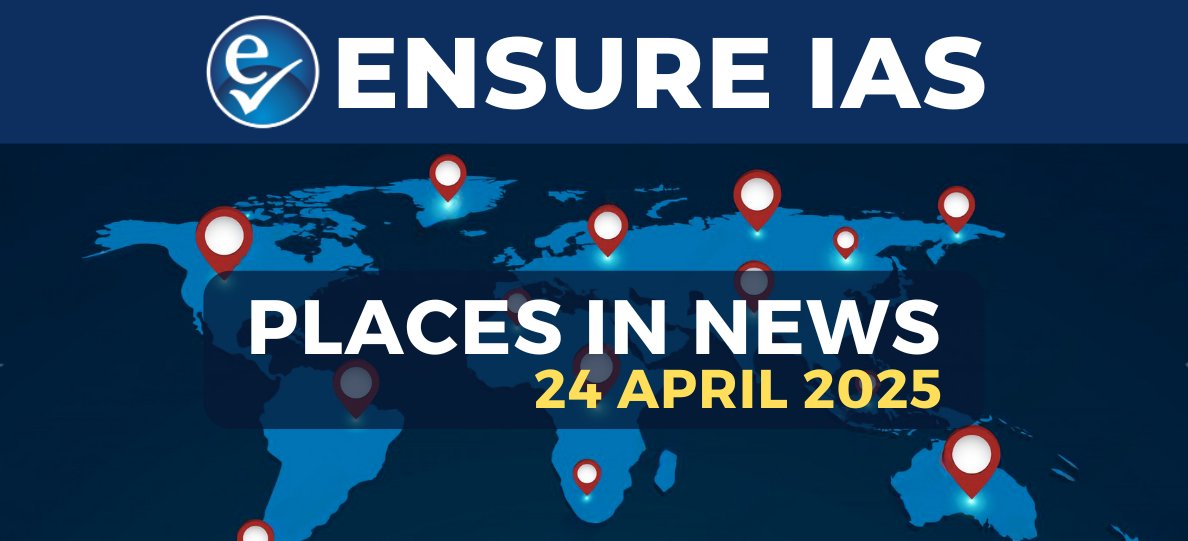- Courses
- GS Full Course 1 Year
- GS Full Course 2 Year
- GS Full Course 3 Year
- GS Full Course Till Selection
- CSAT
- 5 LAYERED ARJUNA Mentorship
- Public Administration Optional
- Online Program
- GS Recorded Course
- NCERT Batch
- Polity Module Course
- Geography Module Course
- Economy Module Course
- AMAC Module Course
- Modern India, Post Independence & World History Module Course
- Environment Module Course
- Governance Module Course
- Science & Tech. Module Course
- International Relations and Internal Security Module Course
- Disaster Management Module Course
- Ethics Module Course
- Essay Module Course
- Current Affairs Module Course
- ABOUT US
- OUR TOPPERS
- TEST SERIES
- FREE STUDY MATERIAL
- VIDEOS
- CONTACT US
India Records Lowest Mobile Internet Shutdowns in Eight Years
India Records Lowest Mobile Internet Shutdowns in Eight Years
31-12-2024

- In December 2024, Software Freedom Law Centre (SFLC), India released the Internet Shutdowns Tracker data which claims that the India recorded the lowest mobile Internet shutdowns in the past eight years.
- Despite this reduction, the country remains the world’s leading user of Internet shutdowns.
What is an Internet Shutdown?
- An internet shutdown refers to the intentional disruption of internet communications for a specific population or within a defined geographical location.
- This can last for any duration and is often implemented to exert control over the flow of information, especially during times of unrest or perceived threats to public safety.
What are the recent Trends in Internet Shutdowns?
-
Decline in Shutdowns in 2024
- 60 Shutdowns in 2024: India recorded its lowest number of mobile internet shutdowns in eight years, with 60 incidents, compared to 96 in 2023 and 132 in 2020.
- Regions Affected: The decline is attributed to fewer shutdowns in conflict-prone regions like Jammu and Kashmir and Manipur, which have historically experienced a disproportionately high number of restrictions.
-
Historical Data
- Peak in 2020: The highest number of shutdowns occurred in 2020 (132 incidents), following the abrogation of Article 370 in Jammu and Kashmir in 2019.
- Recent Incidents: Shutdowns were observed in Ambala, Haryana, due to farmer agitations, and in nine districts of Manipur to address ethnic violence.
- India recorded the highest number of internet shutdowns globally over the past decade.
What is the Legal Framework for Internet Shutdowns?
Provisions Under Indian Law
- Indian Telegraph Act, 1885: Internet shutdowns are governed under the Temporary Suspension of Telecom Services (Public Emergency or Public Safety) Rules, 2017, notified under this act.
- The act empowers the government to regulate telecom services, including internet services, during emergencies.
- Internet shutdowns can be imposed under this act in cases of "public emergency" or for "public safety." However, the terms "emergency" and "safety" are not clearly defined, leaving room for interpretation.
- Shutdowns can last for up to 15 days at a time and must be issued by the Union or State Home Secretary.
- These rules mandate transparency, require a review of the shutdown after 48 hours, and provide citizens the right to challenge such orders.
-
Review Committees:
- A three-member Review Committee at the central level, headed by the Cabinet Secretary, reviews shutdown orders issued by the Union Government.
- At the state level, the Chief Secretary leads the review of orders issued by state governments.
Supreme Court Judgement in Anuradha Bhasin vs. Union of India, 2020
- Internet access is a fundamental right under Article 19(1)(a) of the Constitution.
- Indefinite shutdowns are unconstitutional and impermissible under the 2017 Rules.
- Shutdowns must adhere to the principle of proportionality and be temporary in nature.
- All orders imposing shutdowns must be published and are subject to judicial review.
- Section 144 cannot be misused to suppress legitimate protests.
What is the Rationale for Internet Shutdowns?
The government justifies internet shutdowns as temporary and targeted measures to address immediate concerns, including:
- National Security: To prevent the spread of misinformation or coordinate unlawful activities during crises.
- Preventing Unrest: Internet curbs are often used to disrupt the organization of protests, riots, or violent incidents.
- Counteracting Fake News: Shutdowns help curb the spread of false information that can exacerbate tensions during sensitive times.
Why Internet Shutdowns are criticised?
-
Social and Human Rights Concerns:
- Freedom of Expression: Internet shutdowns infringe on the right to freedom of expression guaranteed by the Constitution.
- Access to Information: They prevent citizens from accessing critical information during emergencies.
- Educational Disruptions: Students relying on online resources face significant challenges during shutdowns.
- Impact on Healthcare: Access to telemedicine and health-related information is severely impacted.
- Disaster Management: Loss of communication during disasters hinders the dissemination of early warnings and evacuation plans. For example, Myanmar’s internet shutdown worsened the impact of Cyclone Mocha in 2023.
-
Economic Implications:
- Economic Losses: Shutdowns negatively affect India’s growing digital economy, tourism, and local businesses.
- In the first half of 2023, internet shutdowns in India caused an estimated $118 million in foreign investment losses.
- A single day of disruption can push 379 individuals into unemployment.
- Global Image: Frequent restrictions harm India’s global reputation, raising concerns among investors and international partners.
-
Lack of Transparency:
- Unpublished Orders: States often fail to publish shutdown orders despite a Supreme Court mandate.
- No Centralized Data: The Union government has not maintained centralized records of internet shutdowns.
- No Studies on Impact: The government has repeatedly stated in Parliament that it has not conducted studies to assess the economic or social impact of internet shutdowns.
What can be done to bring the transparency and accountability?
-
Legal and Policy Reforms:
- Defining Key Terms: Clearly define "public emergency" and "public safety" in the 1885 Act and 2017 Rules.
- Proportional Restrictions: Implement measures to restrict specific services (e.g., social media) instead of complete shutdowns.
- Study Impacts: Conduct studies to evaluate the economic, social, and governance impacts of shutdowns.
-
Transparency and Accountability
- Publish Orders: All shutdown orders must be published and made publicly accessible.
- Judicial Oversight: Strengthen judicial review mechanisms to ensure accountability.
-
Public Communication
- Regular Updates: Governments should inform citizens about the reasons, duration, and scope of shutdowns.
- Minimize Disruptions: Avoid indefinite or extended shutdowns to reduce public inconvenience.
Conclusion
Internet shutdowns in India remain a contentious issue. While they are often implemented in the name of national security and public safety, their social, economic, and human rights implications cannot be ignored. The lack of transparency, absence of studies on their effectiveness, and frequent use of this measure have raised concerns both domestically and internationally. A balance must be struck between maintaining law and order and safeguarding citizens’ rights to access information, freedom of expression, and education. Greater transparency, adherence to judicial scrutiny, and exploring alte. 
|
Also Read |
|



